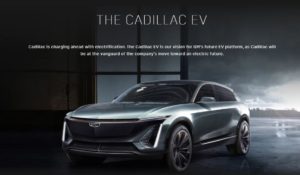

In part 1 of our Electric Cadillac Timeline, we see that Cadillac has tried to monetize EV’s for General motors in the past with the gorgeous Cadillac ELR and tech showboat the CT6. In both cases, the product just did not sell because of:
Today Cadillac has moved its design center back from New York to Detroit and is taking its hard learned EV intelligence into the future. As of September 2019, Cadillac has just a single EV in production anywhere on the globe. Unfortunately, that is the CT6 PHEV which is only for sale in China.
By 2018 it appeared that General Motors had dropped the ball on EV’s when in fact it was reconsidering it’s options. Specifically, it decided that the days of converting existing gasoline powered vehicles to support plug-in hybrids is over. Several designs have been tried including the ELR’s battery down the middle and the CT6’s battery placement in the trunk.
They have also looked at other manufactures designs. In 2018 GM went so far as to give journalists a Telsa Model 3 to compare to the Chevrolet Bolt which began production in November 2016.
The flat pack design that fits battery packs under the seats is the winner. Nearly all manufacturers are standardizing on this idea. It provides the car with stability while not impacting the interior space. Today, most car manufacturers have cancelled the sedans in favor of new SUV designs as consumers wish to sit a little bit higher on the road anyway.
With that prologue out of the way let’s get to the modern Cadillac EV timeline.
“…Cadillac Model Will Be The First Of GM’s Next-Generation EVs… Cadillac’s EV will hit the heart of the crossover market and meet the needs of customers around the world…” SOURCE
2019 – January 13th PM – Cadillac announces they have standardized on a “skateboard” powertrain that will have various numbers of flat pack batteries housed under the cabin floor.
“…The flexible platform will provide a broad array of body styles and will be offered in front-wheel, rear-wheel and all-wheel configurations. Its most critical components — including the battery cells — are being designed for maximum usability across all programs. The battery system will also be adjustable, based on vehicle and customer requirements.”
2019 – August – www.ElectricCadi.com goes live
This website uses cookies.